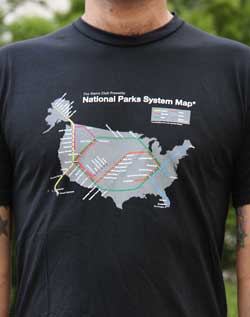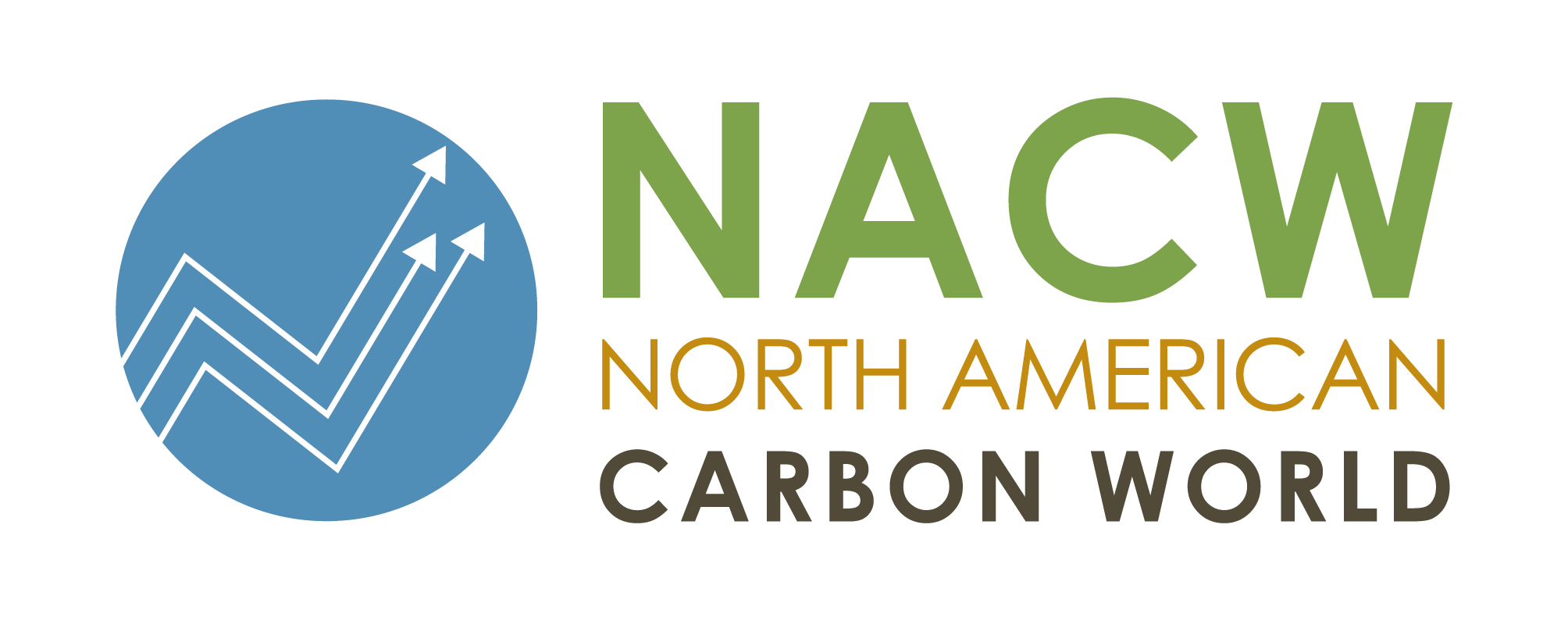Reserve Board adopts Grassland Project Protocol Version 2.0
Errata and Clarifications released for the Nitric Acid Production Project Protocol Versions 2.1, 2.0, and 1.0
Presentation and recording available for Dec 21 webinar: Adapting Offset Protocols for Ontario, Quebec, and Other Jurisdictions
Developing Mexico Boiler Efficiency and Mexico ODS Projects webinar on January 12 , in Spanish and English
Give and receive on Giving Tuesday
Today is Giving Tuesday, a reminder to give back to the causes that are closest to our hearts. As the holiday season ramps up and the end of the year approaches, it’s important to celebrate and support the great organizations with our philanthropy and generosity.
And, if you still have people on your holiday list after Black Friday and Cyber Monday, today is a great day to finish off your shopping – while supporting your favorite causes!
Many organizations offer unique gifts and gear as a method of support. Here are our top favorite unique gifts available in support of our favorite causes:
 |
Defenders of Wildlife Wind Chimes, $20 | In the jingle jangle morning, wildlife will come following you. |
 |
CicLAvia Nutcase Helmet, $70 | Because how would it feel? To be on your own, with no direction home, like a struck unknown, like a rolling stone. |
 |
Union of Concerned Scientists Got Science Water Bottle, $12 | Come gather ’round people wherever you roam, and admit that the waters around you have grown, and accept it that soon you’ll quench your thirst to the bone. |
 |
The Nature Conservancy Sea Turtle Nest, $55 and up | When the rain is blowing in your face, and the whole world is on your case, this turtle could offer you a warm embrace. |
 |
I Heart NPR Shopping Tote, $7 | How many times can a man trash a bag before they’re forever banned? Plastic bags my friend are blowing in the wind. |
 |
Sierra Club National Parks Transit System Map T-Shirt, $19.95 | Look out kid, don’t matter what you did, walk on your tiptoes, map your park go’s. |
Public comment period open for Grassland Project Protocol V2.0 – comments due November 30, workshop on November 15
Public comment period open for revised Verification Program Manual – comments due November 30
Mexico Boiler Efficiency Project Protocol Version 1.0 was adopted by the Reserve Board on November 1, 2016
El Protocolo de la Reserva de Acción Climática proporciona nuevas oportunidades para que empresas mexicanas se sumen a la lucha contra el cambio climático
El Protocolo de Proyectos de Eficiencia en Calderas de México crea incentivos financieros para tomar decisiones climáticamente inteligentes
LOS ANGELES, CALIFORNIA – La Junta Directiva de la Reserva de Acción Climática, una organización ambientalista sin fines de lucro y el principal registro de bonos de carbono de Norte América, aprobó el día de hoy la adopción del Protocolo de Proyectos de Eficiencia en Calderas de México, Versión 1.0, el cual proporciona una metodología estandarizada para cuantificar, monitorear, y verificar las reducciones de emisiones de gases de efecto invernadero (GEI) debidas a mejoras de eficiencia energética en calderas de México. El que este protocolo esté disponible, significa que las empresas e instalaciones con calderas industriales y comerciales cuentan ahora con un modo estandarizado, eficiente, y flexible para generar créditos de carbono que pueden ser utilizados en el mercado voluntario de carbono de Norte América.
El protocolo final es el resultado de un proceso de desarrollo transparente, dirigido por las partes interesadas, y el compromiso y apoyo dedicado de múltiples agencias del gobierno de México, agencias del gobierno de los Estados Unidos de América, empresas clave del sector de energía, expertos de la industria, y otras partes interesadas. El esfuerzo para el desarrollo de este protocolo fue apoyado la Secretaria de Energía (SENER), a través del Fondo para La Transición Energética y el Aprovechamiento Sustentable de la Energía (FOTEASE), así como por la Agencia de los Estados Unidos para el Desarrollo Internacional (USAID) a través del Programa para el Desarrollo Bajo en Emisiones de México, implementado por Tetra Tech.
“El protocolo es evidencia de la cooperación multinacional de agencias gubernamentales, empresas y organizaciones sin fines de lucro en México y los Estados Unidos, trabajando juntos para avanzar en las soluciones climáticas,” comentó Linda Adams, la Presidenta de la Junta Directiva de la Reserva de Acción Climática y ex Secretaria de la Agencia de Protección Ambiental de California. “Siendo éste el quinto protocolo desarrollado por la Reserva para su uso en México, se refuerza aún más la colaboración de la Reserva con el gobierno e industria de México en las actividades y compromiso ambiental para avanzar en iniciativas transfronterizas.”
Bajo el protocolo de eficiencia en calderas de México, las instalaciones con calderas elegibles de capacidades de 9.8 MW o mayores que modernicen sus calderas preexistentes o las reemplacen con calderas nuevas de alta eficiencia, pueden generar créditos de carbono por las reducciones de emisiones logradas a través del mejoramiento de la eficiencia energética. Actualmente, no existen umbrales de eficiencia energética mínima requeridos legalmente para las calderas de estas capacidades en México, ni una edad de retiro obligatoria para las mismas. En adición a los beneficios climáticos y el potencial ingreso económico adicional, la adopción del protocolo produce co-beneficios relacionados con el mejoramiento de la eficiencia de las calderas, incluyendo el ahorro de costos por la reducción del consumo de energía, el mejoramiento local de la calidad del aire, el mejoramiento de las habilidades de la fuerza laboral, y las innovaciones en tecnologías de energía limpia.
De acuerdo con la Agencia Internacional de la Energía (IEA), y con base en un estudio de sistemas de energía industriales a nivel mundial, los sistemas de vapor representan aproximadamente el 38 por ciento del uso de energía total de los sistemas industriales, mientras que los sistemas motrices son responsables por aproximadamente el 15 por ciento. Un poco más de un tercio de los 67 millones de toneladas de dióxido de carbono equivalente (tCO2e) emitidos por el consumo de combustibles fósiles en el sector industrial de México en 2014 pueden ser atribuidos a la generación del vapor por la industria, o aproximadamente 22.3 millones tCO2e. La IEA estima que la eficiencia energética global de la producción de vapor puede incrementarse en por lo menos un 10 por ciento, por lo que en México, una mejora de 10 por ciento en la eficiencia puede reducir las emisiones de las calderas del sector industrial en hasta dos millones tCO2e por año.
“El Programa para el Desarrollo Bajo en Emisiones de México de USAID es una colaboración importante forjada para apoyar el crecimiento y desarrollo con bajas emisiones en México,” dijo Donald McCubbin, Oficial de Medio Ambiente de USAID. “Al comprometerse a concretar acciones para lograr un desarrollo bajo en emisiones, México puede prosperar al mismo tiempo que reduce su contaminación climática. El Protocolo de Proyectos de Eficiencia en Calderas de México proporciona a las industrias en México una oportunidad para mejorar la eficiencia de calderas que también mejora la eficiencia de las empresas y reduce emisiones, reducciones que pueden ser vendidas en el mercado de carbono. Es alentador observar que nuestra colaboración transfronteriza en busca de las mejores opciones de crecimiento bajo en emisiones ha resultado en la adopción de este protocolo por la Reserva de Acción Climática.”
“Reconocemos la oportunidad significativa para las reducciones de emisiones de gases de efecto invernadero que deriva del mejoramiento de la eficiencia energética de calderas en los sectores comerciales e industriales,” señaló el Mtro. Santiago Creuheras Díaz, Director General de Eficiencia y Sustentabilidad Energética de SENER. “El Gobierno de México es líder entre las naciones en desarrollo para el establecimiento de metas, políticas, y acción regulatoria de nivel nacional e internacional para la mitigación del cambio climático. La promoción de una mejor eficiencia energética de las calderas en México está en línea con nuestra extensa Ley General de Cambio Climático y nuestro compromiso internacional bajo el Acuerdo de Paris. Estamos comprometidos con promover las mejores prácticas de eficiencia energética y desarrollar tecnologías bajas en emisiones que ayudarán a nuestras empresas locales y contribuirán a la mitigación del cambio climático.”




